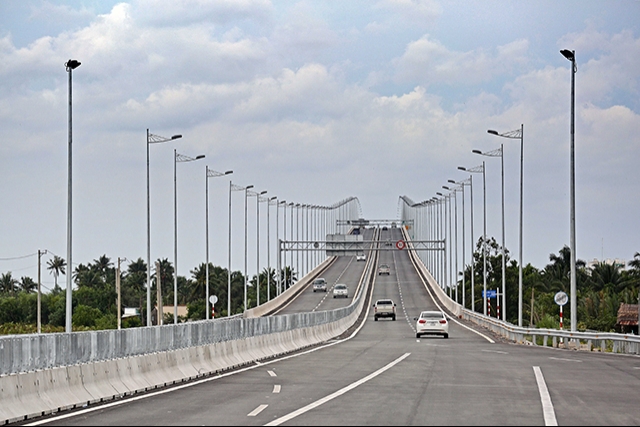$480 billion needed for 6.5-7% average growth over next five years.
Total mobilized capital of VND10.57 quadrillion ($480 billion) is needed for annual GDP growth to average 6.5 to 7 per cent over the next five years, Minister of Planning and Investment Nguyen Chi Dung said at the ongoing NA session.
Mobilized capital to reform the economy is the total resources required for socioeconomic development during the 2016-2020 period, with an incremental capital output ratio (ICOR) estimated at 5 to 5.5 per cent.
With a focus on corporations and enterprises, emphasis is placed on the SOE reform process being “faster and stronger” and the equitization process being transparent in line with the market mechanism.
SOEs that go through equitization must list on the stock exchange one year before conducting an initial public offering (IPO) and attracting strategic investors. Loss-making and ineffective investment projects of State-owned enterprises (SOEs) will be set for bankruptcy under the law.
In public investment, the government will drastically reform budget expenditure and collections, ensuring the safety of public investment and the national fiscal situation. “Practice savings on spending within the ability of the economy. Strengthen the management and effective use of borrowings, and only borrow within the capacity to repay and tightly control borrowings by local governments and SOEs”, the resolution states.
Within the next five years the government is set to reform financial institutions, speed up bad debt settlement, and have at least 12 to 15 commercial banks applying Basel II standards.
The resolution sets a target for the budget deficit being less than 3.5 per cent of GDP in 2020, government debt to be under 54 per cent of GDP, public debt to be under 65 per cent of GDP, foreign debt to be lower than 50 per cent of GDP, and State investment to be 31-34 per cent of total social investment.
“Setting the target of VND10.57 quadrillion ($480 billion) in mobilized capital is to try to reform the economy in a stronger and more robust manner,” Minister Dung went on. “To conduct economic reform based solely on the amount of resources is not enough. It is important to utilize the resources effectively, starting from the use of State resources.”
Within the 10.57 quadrillion ($480 billion), it is estimated that the contribution from the State budget at ministries, authorities and provinces will account for the largest share, at an estimated VND3.57 quadrillion ($180 billion).
During the 2016-2020 period, the FDI sector is expected to contribute more than VND1.4 quadrillion ($68 billion). The government has also included capital from ODA and preferential loans of $39.5 billion. Other sources include SOE equitization funds of $15-20 billion during the 2016-2020 period.
Other resources must be mobilized but the target of the plan is to not focus entirely on mobilizing numerous resources. “We need to focus on adopting reform solutions and increasing economic competitiveness, starting with investment effectiveness,” Minister Dung said. “This will create a chain reaction so that the private sector and the FDI sector will voluntarily come on board, which in turn will increase total investment capital.”
Vietnam has set a GDP growth target of 6.7 per cent in 2017, equal to the target set for this year, while inflation is targeted at 4 per cent against the 5 per cent targeted for this year.
HSBC’s latest report, released in early November, put GDP growth for 2016 at 6.2 per cent and 6.5 per cent for 2017; lower than the government’s plan of 6.7 per cent. Inflation is expected to exceed 4.5 per cent in 2017, 0.5 per cent higher than the government’s plan.


Leave your comment on this story